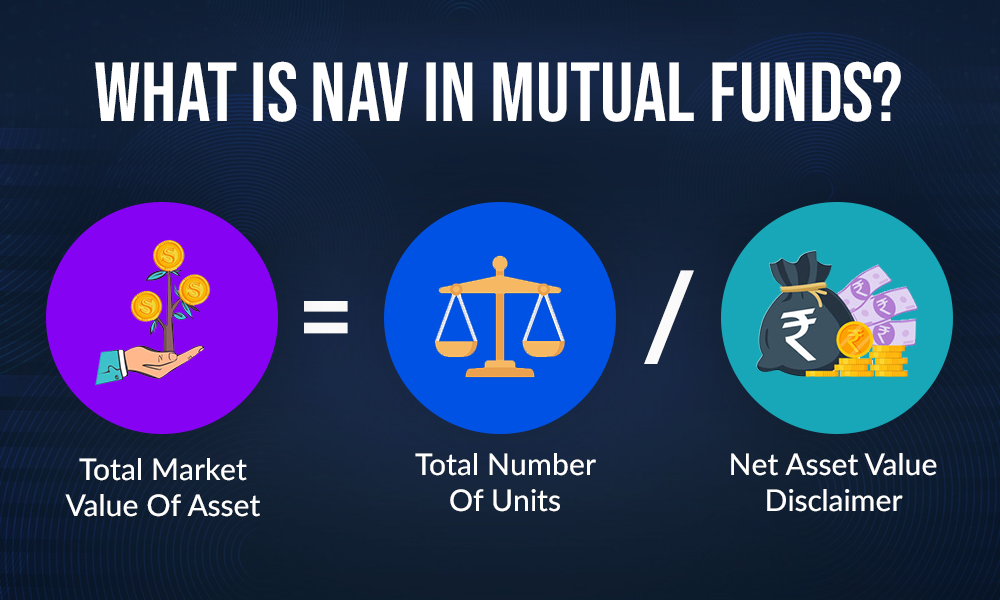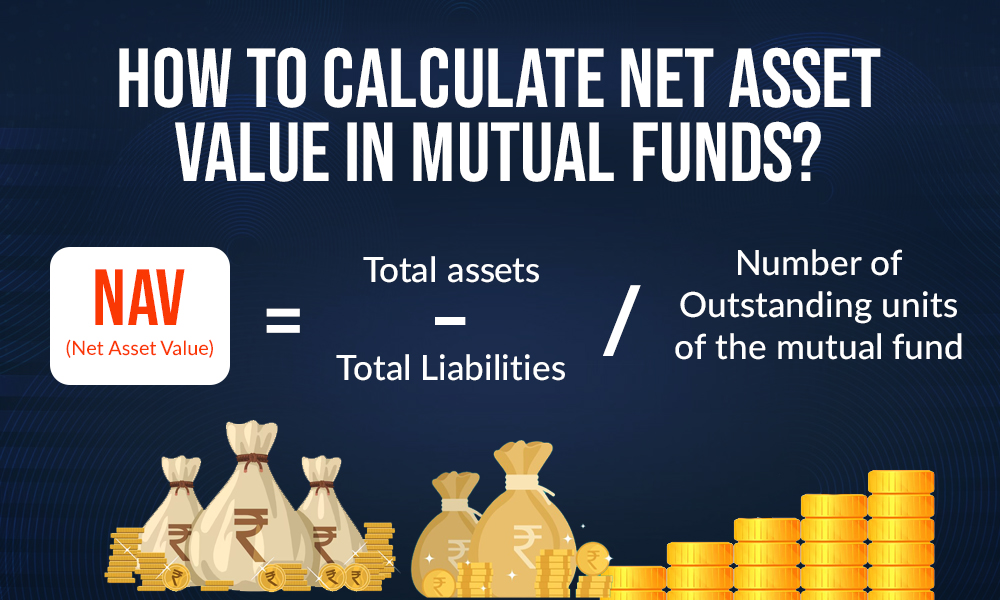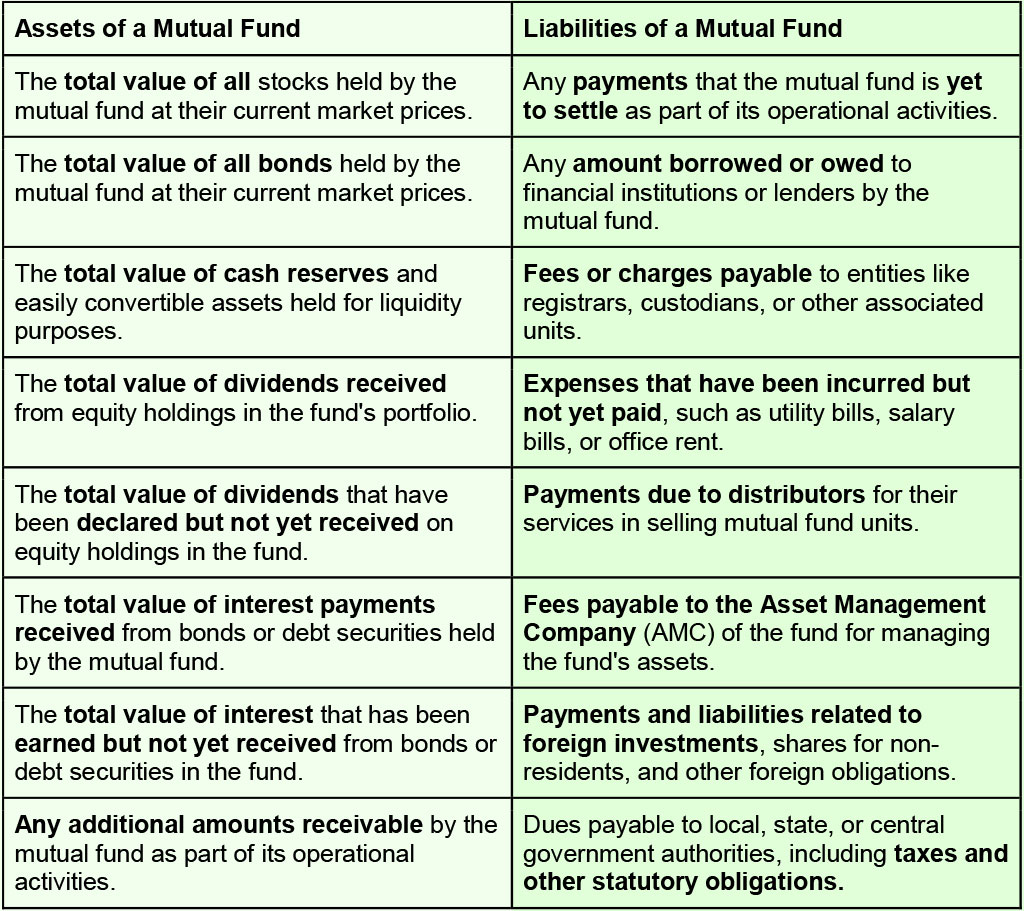
‘Mutual funds are subject to market risk’, this line is what most people think of when we talk about mutual funds. However, the fact remains that mutual funds have today become a staple investment option for the majority of Indians, especially the young generation entering the workforce. Therefore, to tap into the potential of mutual funds in an investment portfolio it is primarily essential to understand the key terms associated with it and their impact on the mutual fund performance. One of the key terms in mutual funds is the NAV or the net asset value. Read on to know the meaning of this term and its importance in mutual fund investment.
Read More: Index Funds vs ETFs - How do you choose?

Net Asset Value (NAV) in mutual funds refers to the per-unit market value of a mutual fund scheme. In simpler terms, NAV is the price at which investors buy or sell units of a mutual fund. NAV is a crucial metric as it indicates the worth of each unit of their investment in the fund. The NAV calculation is done by dividing the total value of all the securities held in the mutual fund's portfolio (after reducing liabilities) by the total number of units outstanding of the mutual fund. Understanding the concept of NAV is essential for an investor as it reflects the fund's performance and overall health. A higher NAV does not necessarily mean a better investment opportunity. It could indicate that the fund has grown but it also implies that the investors have to pay more to buy units. Conversely, a lower NAV may imply a decline in the size of the fund. However, it can also present a buying opportunity for the investors as they can buy the units at a cheaper rate. Therefore, investors should analyze NAV along with other factors like risk, returns, and investment objectives to make informed decisions on their mutual fund investments.
The Net Asset Value (NAV) of a mutual fund in India is typically calculated at the end of each business day, usually after the stock market closes. Once the NAV is calculated, it is reported by the Asset Management Company (AMC) of the mutual fund. This NAV is then used as the basis for buying or redeeming units in the mutual fund scheme. Investors can access the NAV of their mutual fund investments through various channels such as the fund's website, financial newspapers, mutual fund platforms, and the AMC itself, typically daily.

The net asset value or NAV in a mutual fund is calculated using a simple formula. The Net asset formula is given hereunder.
NAV (Net Asset Value) Formula = (Total assets - Total Liabilities) / Number of Outstanding units of the mutual fund.
Let us understand the computation of the net asset value of a mutual fund using the following example.
Suppose a mutual fund scheme has the following details:
Total Assets: Rs. 10,00,00,000
Total Liabilities: Rs. 3,00,00,000
Number of Outstanding Units: 1,00,000
The NAV in this case will be calculated as under,
NAV = (10,00,00,000 - 3,00,00,000) / 1,00,000
NAV = Rs. 7,000
Therefore, the Net Asset Value (NAV) of the mutual fund scheme is Rs. 7,000 per unit.
Now that we have seen the net asset value formula and the computation of NAV, let us further understand what makes the assets and liabilities of a mutual fund.

NAV is crucial for investors to assess the value of their investments. It helps investors make informed decisions about buying or redeeming units. NAV also provides insights into the fund's overall health and financial standing. However, while NAV gives a snapshot of a fund's value, investors should not make investment decisions solely based on NAV fluctuations. A lower NAV doesn't always mean a better investment opportunity, and a higher NAV doesn't necessarily indicate a superior fund. Therefore, NAV should not be the sole deciding factor for making a mutual fund investment decision. Other factors like risk profile, historical performance, expense ratio, and investment objectives should also be considered in making an informed investment decision in mutual funds. Investors should focus on long-term goals and choose funds aligned with their risk tolerance and financial objectives.
As discussed above, the NAV of the fund is reported daily and alters based on the changes in the market value of its securities. it gives an idea of the per-unit value of the mutual fund which is further used to buy or redeem the units of the said fund. However, most novice investors make the mistake of assuming a fund with a higher NAV to be a profitable one or of more value. This myth has led to the downfall of many portfolios. Therefore, while it is prudent to make a note of the mutual fund NAV to analyze the cost per unit, it is often considered to be one of the least important parameters in making an investment decision.
This article was a brief explanation of the term NAV and its relevance in the decision-making process. Let us know if you want details on more mutual fund-related terms and we will explain them in our coming blogs.
Till then Happy Reading!

Introduction For the longest time, investment in stock markets was thought to b...

Mutual fund investments have simplified greatly with just a tap on your smartpho...

Every investor knows that the stepping stones to a good investment in thestock m...